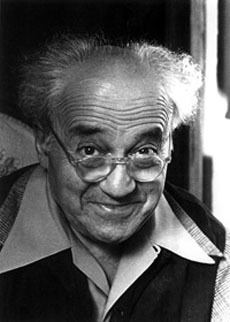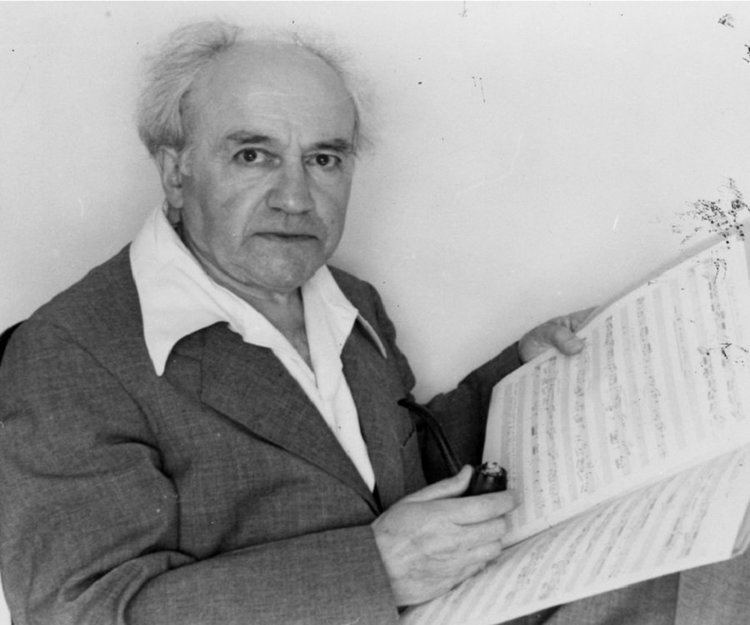Name Ernest Bloch Role Composer | Nationality American, Swiss Children Lucienne Bloch | |
 | ||
Compositions Schelomo, Schelomo, Baal Shem: Three Pictures of Chassidic Life: II Nigun, Baal Shem: Three Pictures of Chassidic Life: II Nigun, Macbeth, Macbeth, Voice in the Wilderness, Voice in the Wilderness, Suite for viola, Suite for viola, From Jewish Life: No 1 Prayer, From Jewish Life: No 1 Prayer, Abodah (A Yom Kippur Melody), Abodah (A Yom Kippur Melody), Enfantines: IX Teasing Allegro vivo, Enfantines: IX Teasing Allegro vivo, Visions and Prophecies: III Moderato - Poco piu animato - Poco piu calmo, Visions and Prophecies: III Moderato - Poco piu animato - Poco piu calmo, Enfantines: VIII Rainy Day Andante con moto, Enfantines: VIII Rainy Day Andante con moto, Piano Quintet no 2: I Animato, Piano Quintet no 2: I Animato, Violin Concerto: II Andante, Violin Concerto: II Andante, Symphony for Trombone and Orchestra: II Agitato, Symphony for Trombone and Orchestra: II Agitato, Suite hebraique: III Affirmation, Suite hebraique: III Affirmation, Paysages: II Alpestre Allegretto, Paysages: II Alpestre Allegretto, Suite no 1 for Solo Violin, Suite no 1 for Solo Violin, Piano Sonata: I Maestoso ed energico - Animato - Grave - Moderato - Tempo I (Animato) - Meno vivo - Molto moderato - Animato - Moderato -, Piano Sonata: I Maestoso ed energico - Animato - Grave - Moderato - Tempo I (Animato) - Meno vivo - Molto moderato - Animato - Moderato -, Voice in the Wilderness: IV Adagio piacevole, Voice in the Wilderness: IV Adagio piacevole, String Quartet no 4: III Presto - Moderato - Presto, String Quartet no 4: III Presto - Moderato - Presto, Sinfonia Breve: I Moderato, Sinfonia Breve: I Moderato, Paysages: I North Moderato molto, Paysages: I North Moderato molto, Enfantines: I Lullaby Moderato, Enfantines: I Lullaby Moderato, Five Sketches in Sepia: V Epilogue Andante sereno, Five Sketches in Sepia: V Epilogue Andante sereno, Concerto for violin and orchestra, Concerto for violin and orchestra, Sonate pour violon et piano n° 1, Sonate pour violon et piano n° 1, String Quartet no 3: I Allegro deciso, String Quartet no 3: I Allegro deciso, Sonata for Violin and Piano no 1: II Molto quieto, Sonata for Violin and Piano no 1: II Molto quieto, Visions and Prophecies: IV Adagio - piacevole, Visions and Prophecies: IV Adagio - piacevole, Concerto grosso no 1: II Dirge, Concerto grosso no 1: II Dirge, Piano Quintet no 2: III Allegro, Piano Quintet no 2: III Allegro, Visions and Prophecies: V Poco agitato - Piu lento - Calmo, Visions and Prophecies: V Poco agitato - Piu lento - Calmo, Violin Concerto: III Deciso, Violin Concerto: III Deciso, Two pieces for viola and piano: II Processional, Two pieces for viola and piano: II Processional, Voice in the Wilderness: II Poco lento, Voice in the Wilderness: II Poco lento, Enfantines: II The Joyous Party Allegro giocoso, Enfantines: II The Joyous Party Allegro giocoso, Symphony in C-sharp minor: III Vivace, Symphony in C-sharp minor: III Vivace, String Quartet no 2: II Presto, String Quartet no 2: II Presto, Enfantines: V Joyous March Allegro giocoso - Poco meno vivo, Enfantines: V Joyous March Allegro giocoso - Poco meno vivo, String Quartet no 3: II Adagio non troppo, String Quartet no 3: II Adagio non troppo, Suite hebraique: I Rapsodie, Suite hebraique: I Rapsodie, Symphony for Trombone and Orchestra: III Allegro deciso, Symphony for Trombone and Orchestra: III Allegro deciso, Five Sketches in Sepia: IV Uncertainty Moderato, Five Sketches in Sepia: IV Uncertainty Moderato, Sonata for Violin and Piano no 1: III Moderato, Sonata for Violin and Piano no 1: III Moderato, Violin Sonata No 2 'Poeme mystique': II Animato, Violin Sonata No 2 'Poeme mystique': II Animato, Nuit exotique, Nuit exotique, Concerto grosso no 1: IV Fugue, Concerto grosso no 1: IV Fugue, Suite no 1 for Cello Solo: I Prelude, Suite no 1 for Cello Solo: I Prelude, Sinfonia Breve: III Allegro molto, Sinfonia Breve: III Allegro molto, Meditation and Processional: I Meditation: Andante, Meditation and Processional: I Meditation: Andante, Sinfonia Breve: II Andante, Sinfonia Breve: II Andante, String Quartet no 3: III Allegro molto, String Quartet no 3: III Allegro molto Similar People Max Bruch, Samuel Barber, Edward Elgar, Steven Isserlis, Antonin Dvorak | ||
Ernest Bloch - Concerto Grosso No. 1 (1925)
Ernest Bloch (July 24, 1880 – July 15, 1959) was a Swiss-born American composer.
Contents
- Ernest Bloch Concerto Grosso No 1 1925
- Ernest bloch symphony in c sharp minor andante conclusion conduct stephen gunzenhauser hd
- Biography
- Legacy
- Stage
- Orchestral
- Concertante
- Vocal and choral
- Chamber
- Instrumental
- Piano
- Organ
- Family
- Music
- Photography
- References

Ernest bloch symphony in c sharp minor andante conclusion conduct stephen gunzenhauser hd
Biography
Bloch was born in Geneva on July 24, 1880 to Jewish parents. He began playing the violin at age 9. He began composing soon after. He studied music at the conservatory in Brussels, where his teachers included the celebrated Belgian violinist Eugène Ysaÿe. He then travelled around Europe, moving to Germany (where he studied composition from 1900–1901 with Iwan Knorr at the Hoch Conservatory in Frankfurt), on to Paris in 1903 and back to Geneva before settling in the United States in 1916, taking US citizenship in 1924. He held several teaching appointments in the USA with George Antheil, Frederick Jacobi, Quincy Porter, Bernard Rogers, and Roger Sessions among his pupils. See: List of music students by teacher: A to B#Ernest Bloch. In 1917 Bloch became the first teacher of composition at Mannes School of Music, a post he held for three years. In December 1920 he was appointed the first Musical Director of the newly formed Cleveland Institute of Music, a post he held until 1925. Following this he was director of the San Francisco Conservatory of Music until 1930. He spent most of the following decade in Switzerland where he composed his Avodath Hakodesh ("Sacred Service") before returning to the USA in 1939.
In 1941, Bloch moved to the small coastal community of Agate Beach, Oregon and lived there the rest of his life. He taught and lectured at the University of California, Berkeley until 1952.
He died on July 15, 1959 in Portland, Oregon, of cancer at the age of 78. His body was cremated and his ashes were scattered near his home in Agate Beach.
Legacy
The Bloch Memorial has been moved from near his house in Agate Beach to a more prominent location at the Newport Performing Arts Center in Newport, Oregon.
Stage
Orchestral
Concertante
Vocal and choral
Chamber
Instrumental
Piano
Organ
Family
Ernest Bloch and his wife Marguerite Schneider had three children: Ivan, Suzanne and Lucienne. Ivan, born in 1905, became an engineer with the Bonneville Power Administration in Portland, Oregon. Suzanne Bloch, born in 1907, was a musician particularly interested in Renaissance music who taught harpsichord, lute and composition at the Juilliard School in New York. Lucienne Bloch, born in 1909, worked as Diego Rivera's chief photographer on the Rockefeller Center mural project, became friends with Rivera's wife, the artist Frida Kahlo, and took some key photos of Kahlo and the only photographs of Rivera's mural (which was destroyed because Lenin was depicted in it).
Music
Bloch's musical style does not fit easily into any of the usual categories; he studied variously with Jaques-Dalcroze, Iwan Knorr and Ludwig Thuille, as well as corresponding with Mahler and meeting Debussy. Many of his works - as can be seen from their Hebrew-inspired titles - also draw heavily on his Jewish heritage. Bloch's father had at one stage intended to become a rabbi, and the young Ernest had a strong religious upbringing; as an adult he felt that to write music that expressed his Jewish identity was "the only way in which I can produce music of vitality and significance".
Photography
The Western Jewish History Center, of the Judah L. Magnes Museum, in Berkeley, California has a small collection of photographs taken by Ernest Bloch which document his interest in photography.
Bloch's photography was discovered by Eric B. Johnson in 1970. With the encouragement of Bloch's children, Johnson edited and printed hundreds of his photographs which can be viewed at http://www.ericjohnsonphoto.com
Many of the photographs Bloch took—over 6,000 negatives and 2,000 prints many printed by Eric Johnson from the original negatives—are in the Ernest Bloch Archive at the Center for Creative Photography at the University of Arizona in Tucson along with photographs by the likes of Ansel Adams, Edward Weston and Richard Avedon.[1]
Some of the pictures that Bloch took in his Swiss residence are visible here. The snapshots have been donated to the Archivio audiovisivo di Capriasca e Val Colla by the Associazione ricerche musicali nella Svizzera italiana.
